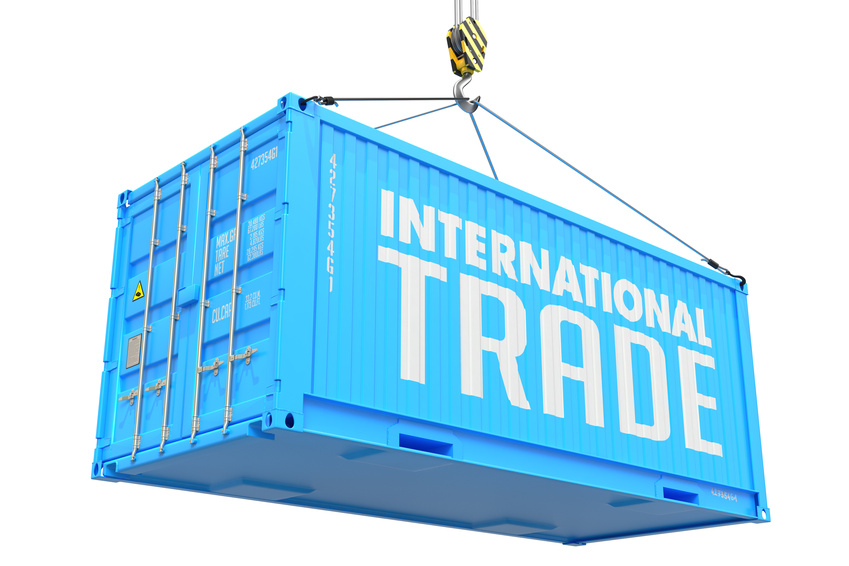On September 30, 2018, the United States, Mexico and Canada (the Parties) reached an agreement to replace the North American Free Trade Agreement (NAFTA). The new agreement is called the United States-Mexico-Canada Agreement (USMCA). As has been widely reported, the Parties conducted many months of negotiations to reach this agreement.
It is important to note that the USMCA still has to be ratified by all the Parties. Until this ratification has taken place, the current NAFTA rules and regulations remain in place. This means that there is no immediate change to existing legal structure in place.
One of the biggest changes in the USMCA is that it will displace (once it enters into force) and significantly alter the former NAFTA Chapter 11 – the investor-state dispute settlement (ISDS) system between the Parties. The USMCA essentially erases ISDS as between Canada and the US, curbs ISDS as between Mexico and the US, and leaves Canada and Mexico to the ISDS system in the Comprehensive and Progressive Agreement for Trans-Pacific Partnership (CPTPP).
One of the principal goals of ISDS is to provide protections for foreign investment by nationals and companies of one state in the territory of another state, in order to create a more predictable and possibly more favourable investment climate.
The curbing of ISDS in the USMCA reflects a larger trend of efforts to minimize investors’ ability to seek redress against governments for allegedly wrongful acts, such as expropriation. This effort to curb ISDS has come from politicians of many different political views in a wide range of countries, from Australia to Venezuela.[1]
ISDS between Canada and the US
After the USMCA enters into force, Canadian investors in the US and US investors in Canada will not be able to commence neutral arbitration proceedings against the state Parties in which they have invested. Instead, if one of the state Parties has breached a substantive right of the investor under Chapter 14 of the USMCA (i.e., expropriated its investment) the investor will have to rely on bringing a claim in the national courts of the host state (i.e., where the investment was made).[2] The investors will therefore have to rely on the national courts host state to remedy any alleged violations of Chapter 14.
Under Annex 14-C, claims with respect to investments established or acquired while NAFTA is still in effect (“legacy investments”) will remain in place until three years after the termination of NAFTA. This means that US or Canadian investors who have invested in the other state prior to the termination of NAFTA (which could be months or years away) will be entitled to the protections of NAFTA (including the right to arbitration) for three years following its termination. The key here is that the investment would have to be made prior to the termination of NAFTA. Once NAFTA is terminated, any investments made after that date – even if made in the three year sunset period – will not be susceptible to arbitration.
Although this “sunset clause” is notably shorter than most other investment treaty sunset or survival clauses,[3] the three-year sunset provision makes sense in light NAFTA’s “statute of limitations,” which prevents claims from being brought more than three-years after the offending act. In other words, any alleged wrongs that occurred more than three-years after the termination of NAFTA could not be brought under NAFTA in any event.
While the USMCA Chapter 14 is a step backwards for American and Canadian investors, Canada will likely see this new deal as a win. Canada has been sued 41 times under NAFTA Chapter 11, more than Mexico or the US. While the US has never lost a case under NAFTA Chapter 11, Canada has lost eight and won nine. It is estimated that Canada has paid out more than $219 million in damages and settlements under NAFTA and has spent $95 million in unrecoverable legal costs.[4]
ISDS between Mexico and the US
Under Annexes 14-C, 14-D and 14-E of the USMCA, US investors in Mexico and Mexican investors in the US can still commence arbitrations against the state in which they invested.
As with Canada and the US, Mexican and US investors may still file arbitration claims related to legacy investments within three years after the termination of NAFTA. For claims filed after the three-year period, Mexico and the US have conditioned and limited their consent to arbitration, distinguishing between claimants who have regular investments and claimants who are parties to covered government contracts.[5]
Claimants with regular investments may only challenge measures in breach of Articles 14.4 (national treatment), 14.5 (most-favored nation treatment), and 14.8 (expropriation, excluding indirect expropriation).
Moreover, and importantly, claimants must initiate domestic litigation in the courts of the host state before submitting their claim to arbitration. They can only commence arbitration if there is a final decision of a “court of last resort of the respondent or 30 months have elapsed” after the initiation of the domestic court proceedings. Another noteworthy addition is a four-year statute of limitations for investment-related claims. This means that investors may have to be quick to bring their claim in the courts in order to make sure they have time to bring their arbitration claim following the 30 month litigation period.
Claimants who are parties to covered government contracts enjoy a broader scope and direct access to arbitration (after a six-month cooling off period). They may challenge measures in breach of the whole Chapter 14. Claims under a covered government contract will be subject to a three-year statute of limitations.
ISDS between Canada and Mexico
Absent from Chapter 14 of USMCA is any provision for Canadian investors in Mexico and Mexican investors in Canada to submit claims to arbitration. In the post-NAFTA era, these investors will necessarily have to pursue claims under the investor-state dispute settlement provisions of the CPTPP (which has also not yet entered into force). The CPTPP, also known as TPP-II, succeeds the Trans-Pacific Partnership which never entered into force after the United States withdrew its support in early 2017. The ISDS provisions under the CPTPP are narrower than those under Chapter 11 of NAFTA. They impose a higher burden of proof on investors to establish breaches of investment obligations and give governments more leeway to implement public welfare measures without giving rise to claims of expropriation.
The CPTPP was signed by 11 countries in March 2018. The agreement will enter into force 60 days after ratification by at least half of the signatories. Mexico was the first country to ratify the agreement, followed by Japan and Singapore. Canada has yet to ratify the agreement.
Entry into Force of the USMCA
The USMCA has yet to be signed but is expected to be signed later this year. The USMCA remains subject to legal review for accuracy, clarity and consistency. The Parties still need to complete their domestic ratification procedures and other internal procedures required for ratification. After the all Parties notify the other Parties that ratification has been accomplished, the USMCA will enter into force on the first day of the third month following the last notification.
Until such time as the USMCA enters into force, which could take months or years to accomplish, the NAFTA provisions (including the ISDS provisions) will remain in force. It is unlikely, if not impossible, that the USMCA can be ratified in the US prior to the mid-term Congressional elections. It should be expected, therefore, that the ratification of the USMCA will be considered by the incoming US Congress. In any event, the timing and eventuality of the USMCA entering into force is uncertain.
The text of the USMCA can be found here [https://ustr.gov/trade-agreements/free-trade-agreements/united-states-mexico-canada-agreement/united-states-mexico].
*We thank Faye Williams, an articling student at Baker McKenzie Toronto, for her assistance with this post.
[1] See Bilateral and Regional Trade Agreements, Australian Government Productivity Commission (November 2010), p. XXXVI (Chapter 14); Report 165: Trans-Pacific Partnership Agreement, Australian Joint Standing Committee on Treaties (November 2016), Chapter 6. Venezuela denounced the ICSID Convention in 2012 and terminated a bilateral investment with the Netherlands in 2008. See, eg, Luke Eric Peterson, Venezuela Surprises The Netherlands With Termination Notice For Bit; Treaty Has Been Used By Many Investors To ‘Route’ Investments Into Venezuela, IA Reporter (16 May 2008); Netherlands to terminate BIT with Slovakia in wake of Achmea, Lacey Yong, GAR, (02 May 2018). Indeed, some other countries have terminated or denounced BITs or MITs, however, most IIAs have sunset or survival clauses which guarantee that the provisions will remain in effect from 5 to 20 years after termination. See generally Denunciation of the ICSID Convention and BITs: Impact on Investor-State Claims, UNCTAD Issues Notes No. 2, December 2010, pp. 3-4.
[2] It is also possible that one of the Parties could espouse a claim against the other on behalf of the investor. But this has almost never occurred in the past and it does not seem likely that the Parties here will bring such claims on behalf of their investors.
[3] See supra, at n. 1.
[4] Scott Sinclair, Canada’s Track Record Under NAFTA Chapter 11 North American Investor-State Disputes to January 2018, Canadian Centre for Policy Alternatives, Jan 2018, pp. 1, 4.
[5] The USMCA defines covered government contracts as “a written agreement between a national authority of [Mexico or the US] and a covered investment or investor of [Mexico or the US], on which the covered investment or investor relies in establishing or acquiring a covered investment other than the written agreement itself, that grants rights to the covered investment or investor in a covered sector.”








